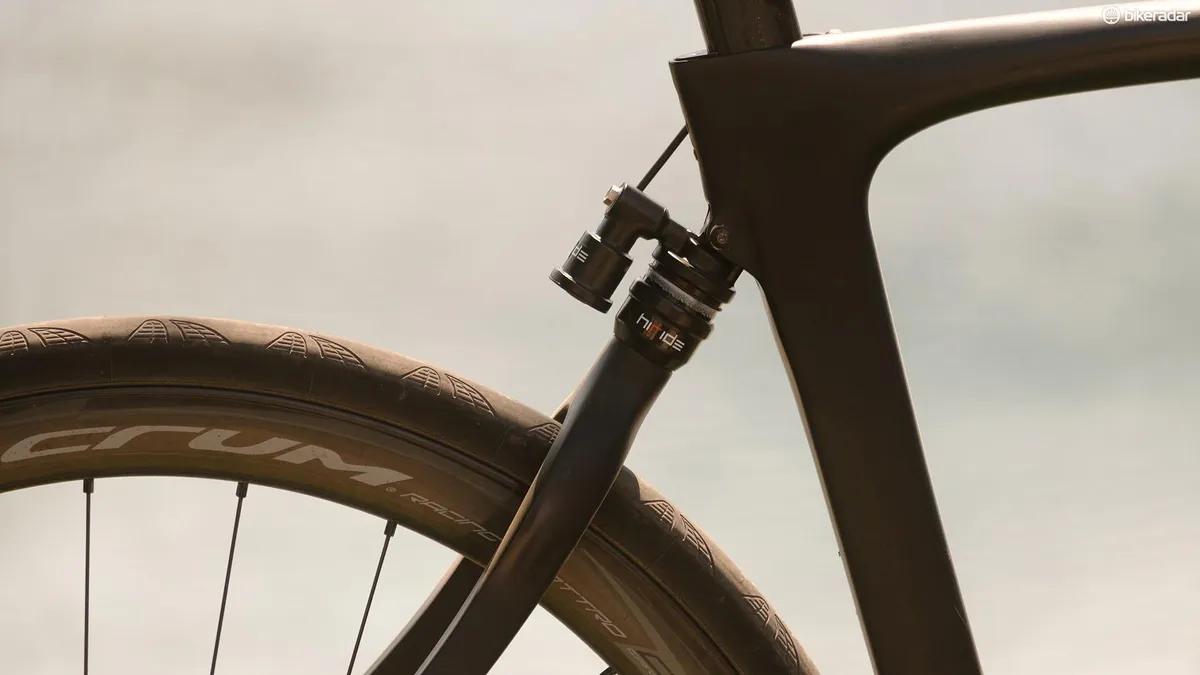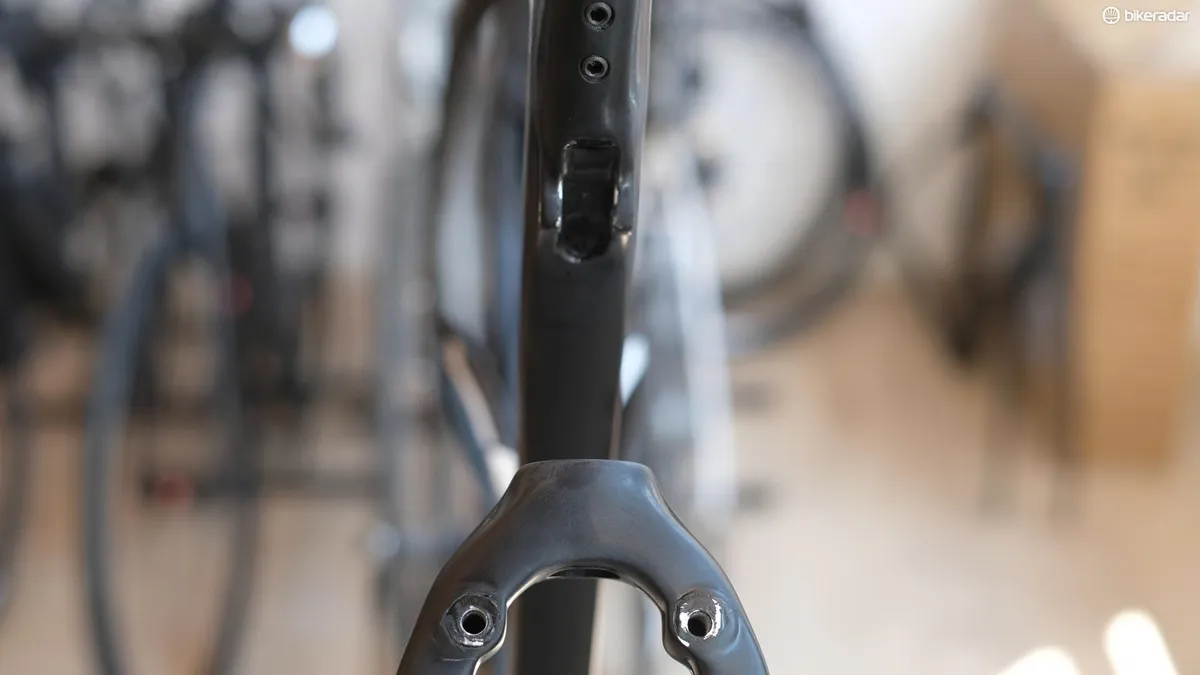With technologies such as disc brakes and tubeless tyres rapidly becoming the norm on road bikes, is it feasible that suspension could be the next big thing for those who stay on the road?
BikeRadar recently headed across to Milan, Italy, to visit suspension experts HiRide and try out a road bike equipped with its ESAS semi-active suspension system.
- Full-suspension gravel bike breaks cover in Taipei
- Why the next-gen adventure road bike is a mountain bike in disguise
HiRide’s ESAS suspension system in detail
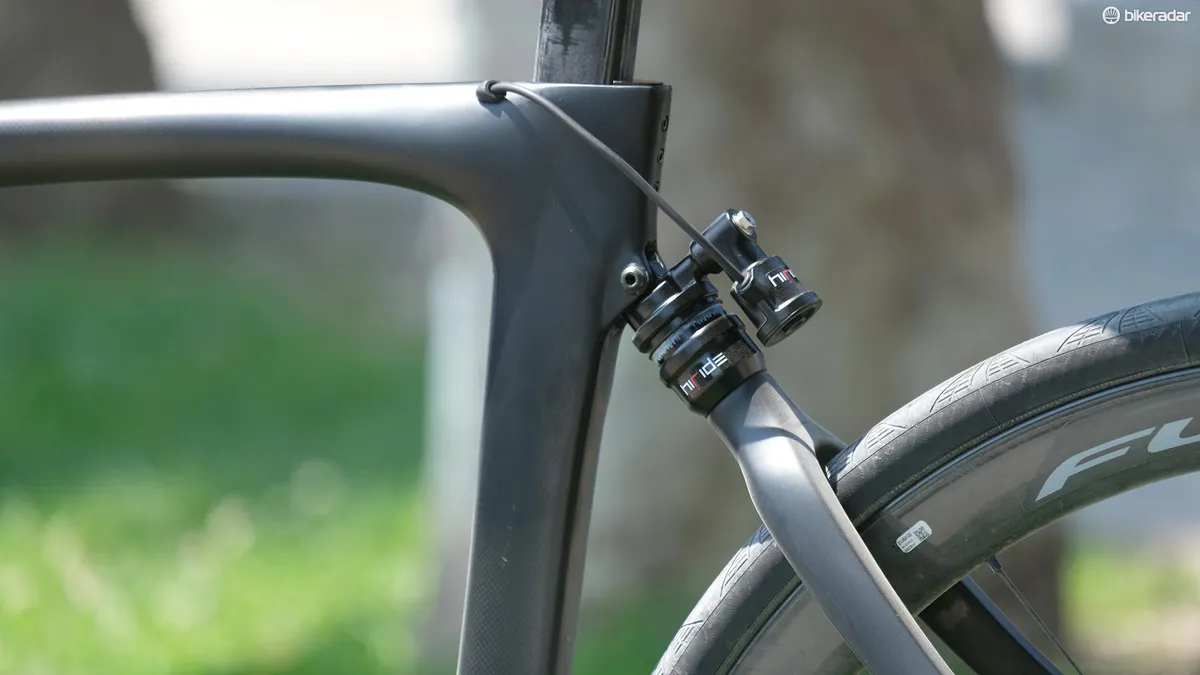
With ESAS, HiRide claims to have launched the first electronic suspension system for road bikes. Pitched at the road, gravel and cyclocross market, the system is currently available exclusively through Pinarello’s Dogma K10S road bike.
ESAS uses a series of sensors that monitor ride conditions which — thanks to a sophisticated algorithm and onboard sensors — can open or close an elastomer-based rear suspension unit and deliver up to 11mm of suspension at the rear wheel.
It’s quick to think too, taking just a tenth of a second for the system to lock or unlock the damper.
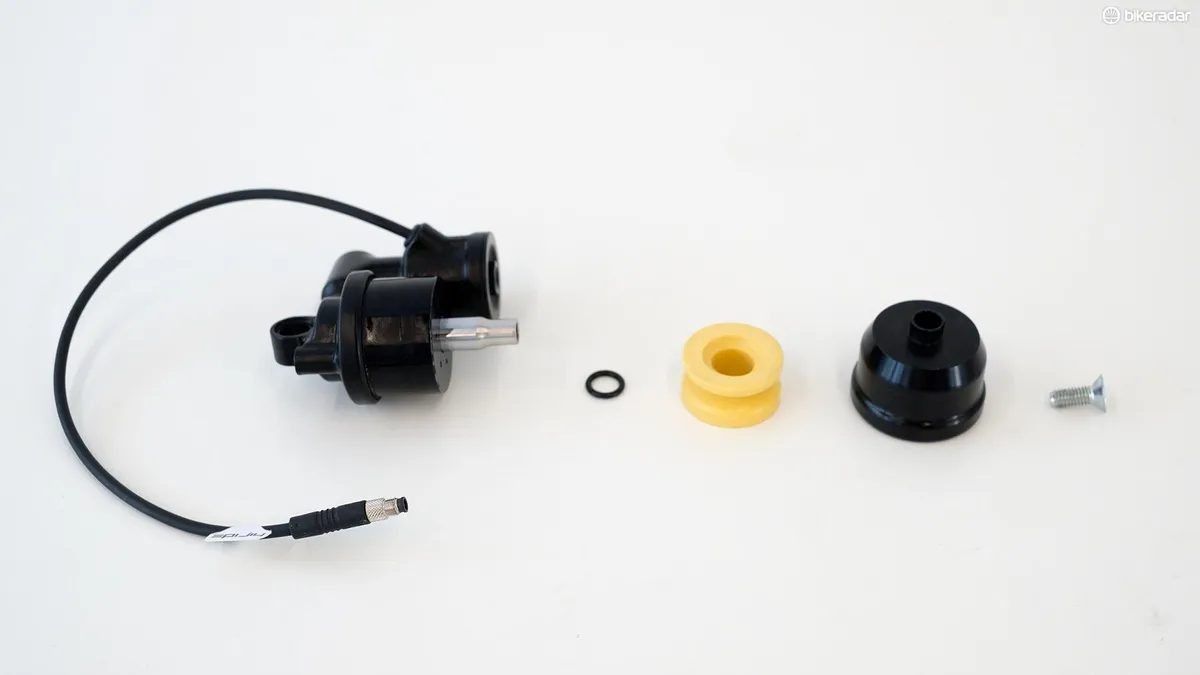
ESAS aims to bring the best qualities of a bike that is both with and without rear suspension — think a bike that sprints and climbs like a regular, rigid road bike but one that can open up to maximise grip and comfort when necessary.
Choosing when the system should open or close is part of the magic, and it’s absolutely HiRide’s forte, with the brand having produced the algorithms for the active suspension systems of many major automotive brands.
Aside from the suspension damper itself, ESAS also places a smart battery unit within the bike’s frame. Mounted beneath the bottle cage mounts in the seat tube of Pinarello’s K10S, the 130g unit also acts as the system’s brain and contains the six-axis accelerometer/gyroscope that it uses to read the road beneath it.
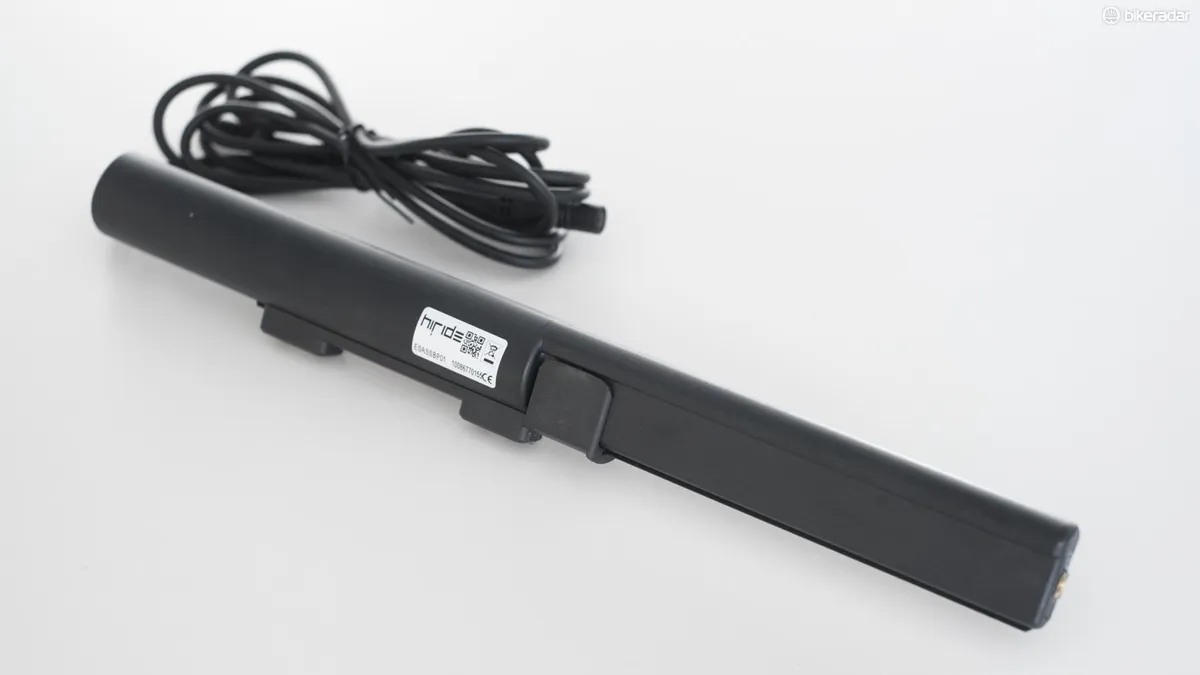
Bluetooth and ANT+ compatibility, plus a dedicated app, mean the system can be controlled via a number of devices.
Our test bike made use of a Garmin head unit for this purpose, although a neat control unit at the bike’s down tube allows you to do the same thing without a screen. This component also incorporates a USB-C interface for charging. The whole system adds 320g over a regular Dogma frame.
Paris-Roubaix proven
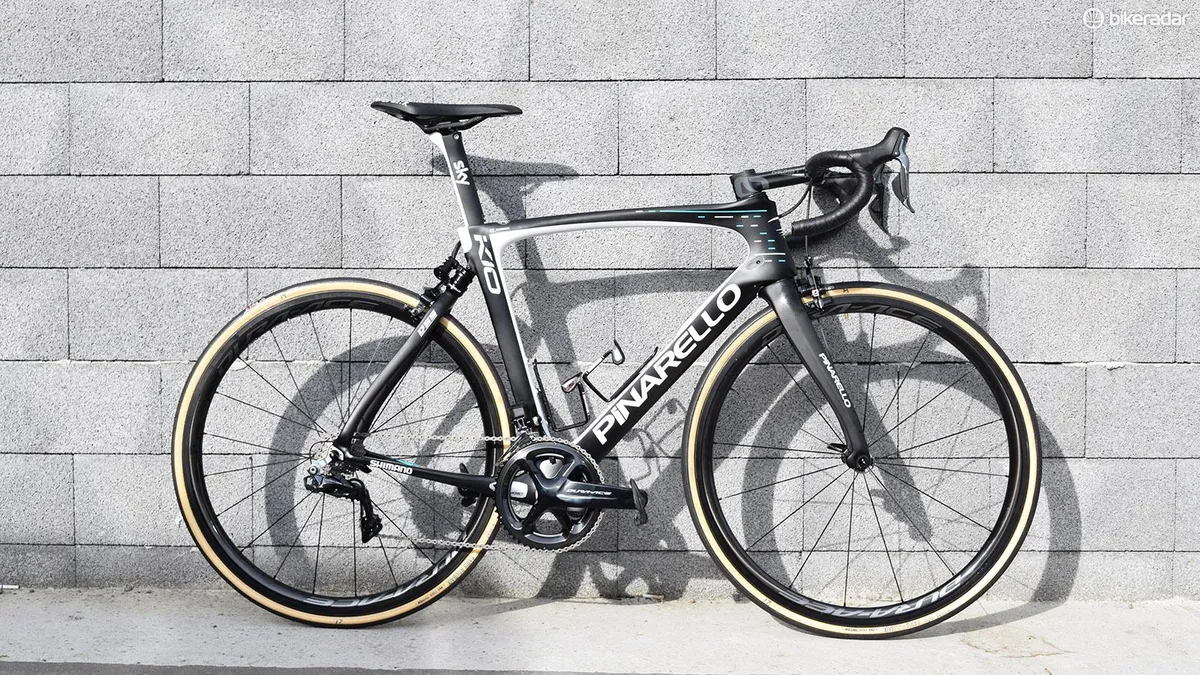
If you keep up with pro tour tech then there’s a good chance you’ve already spotted HiRide’s ESAS system between the legs of Team Sky riders.
First seen on a select few Team Sky bikes at the 2017 Paris-Roubaix, the system was then adopted by all four entrants from Team Sky during the 2018 Paris-Roubaix.
HiRide’s relationship with Pinarello also led to the ESAS suspension system being available on a production bicycle for the first time in the form of the bike tested here, Pinarello’s Dogma K10S.
Do road bikes really need suspension?
There are two main goals that can be achieved by introducing suspension to a road bike, the first is the one most talked about, and that’s improving rider comfort.
Today’s market is flooded with a whole host of machines that flex in ways that will help combat fatigue on longer rides by reducing the forces transmitted through to a rider. But as many of you will already know, this is only half of the story because the primary role of suspension in most performance applications is to actually improve a vehicle’s grip.
A well-tuned suspension system will ensure that a rider’s tyre remains in contact with the ground and this in-turn improves traction, grip and stability for the rider.
Improvements here could and indeed should result in an improvement in performance for the rider, and in certain situations can also improve safety dramatically too.
HiRide ESAS suspension system first ride impressions
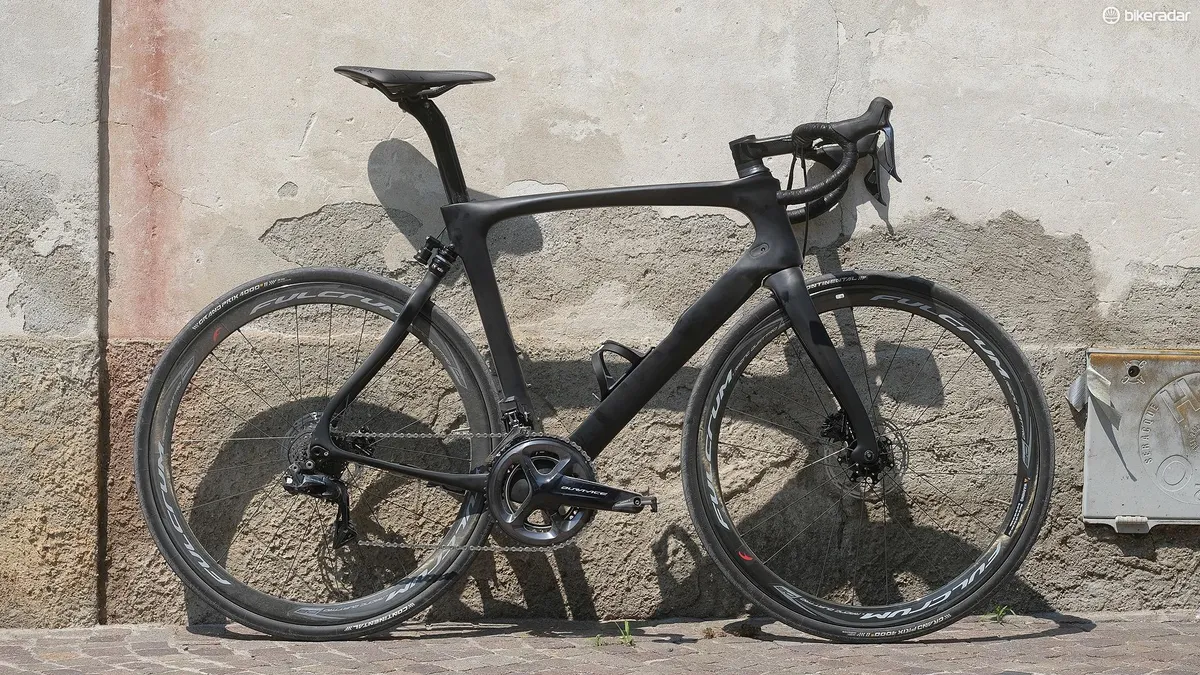
My test ride on the ESAS-equipped Dogma K10S certainly left a lasting impression.
Before we set out I was walked through HiRide’s Garmin IQ app, which was set in its automatic mode, meaning the job of locking and unlocking the suspension was left entirely to the sensors and algorithms.
The app flickers visibly multiple times every second and is a constant reminder that the bike is keeping an eye on things beneath you.
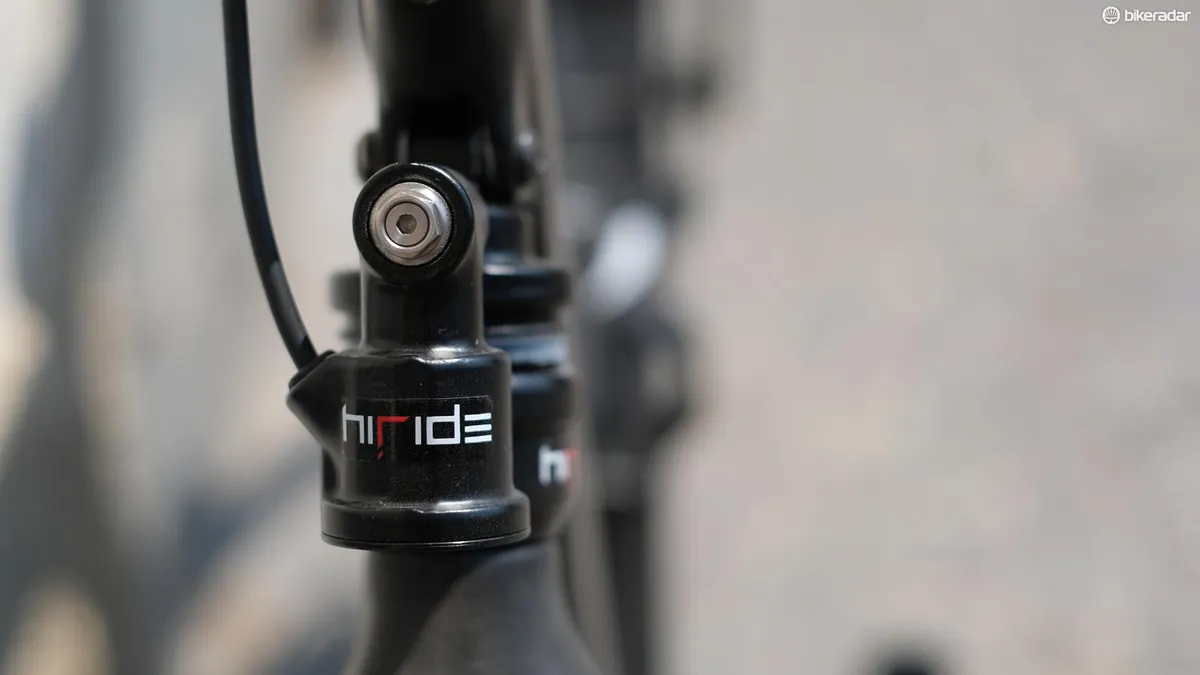
A few kilometres into riding on gravel paths and it was easy to detect the additional comfort available at the rear of the bike. I know Conti's GP4000 SIIs well, and realise that in their 28mm form set at 90psi I would normally be pretty uncomfortable for anything other than smooth tarmac.
The sensation of a moving rear wheel is one that I’d never experienced on a road bike, and despite just 11mm of travel it sure is noticeable. I’m not talking the sort of plush suspension that we are used to on a short travel mountain bike, rather an extension of the sort of feel that you get from a supple tubeless tyre.
In order to maximise the benefit of the suspension I found it was necessary to make a conscious effort to keep my weight over the saddle. Bikes with little to no suspension mean that a rider has to use their limbs in order to compensate for sudden undulations, but with this setup you almost do not have to.
I say almost because the rigid front end still restricts things somewhat. In fact, within twenty minutes or so of travelling on this sort of terrain it was clear that the front and rear ends of this bike were two very different beasts. My hands were buzzed to bits but my behind and feet remained very fresh indeed.
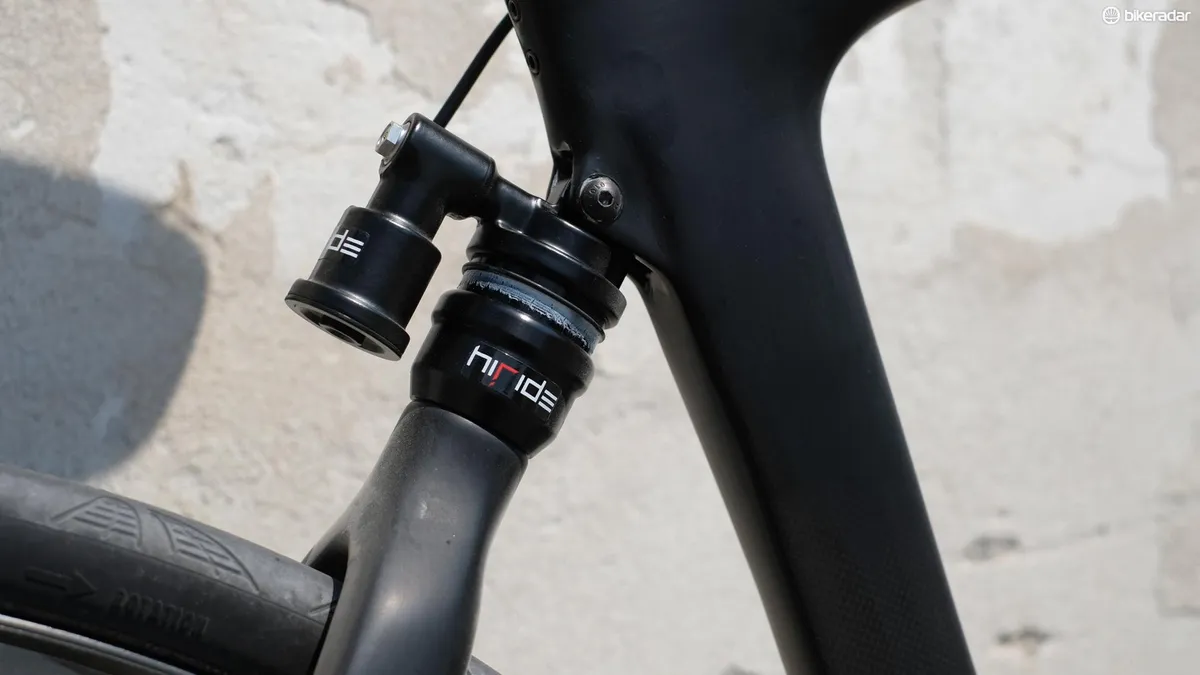
The ESAS system appeared to do a good job of judging when to lockout and when to open up the shock. As we moved to smoother surfaces the shock remained closed and the bike accelerated and generally felt exactly how I’d expect from a bike of this calibre.
More revealing was the end of the test, which took us to a particularly fierce cobbled descent. The slope was treacherous and saw me outbrake myself at the first corner, thankfully there was plenty of run off and I didn’t drop the £10,000+ Dogma.
The rear wheel continued to track well over the slightly greasy, off-camber cobbles and it wasn’t long before I was tasked with riding up the gradient we’d just come down. This is where I feel the system really came into its own.
Luca, HiRide’s test rider, took the lead as we familiarised ourselves with our lowest gears. I’d manually overridden the lockout on my bike to ensure that the suspension remained open, this involved just a single tap at the screen of the Garmin head unit.
It was impressive to see Luca’s rear tyre looking so planted on the steep cobbled surface. Traction was simply not an issue for either of us as breaths deepened and muscles began to burn.
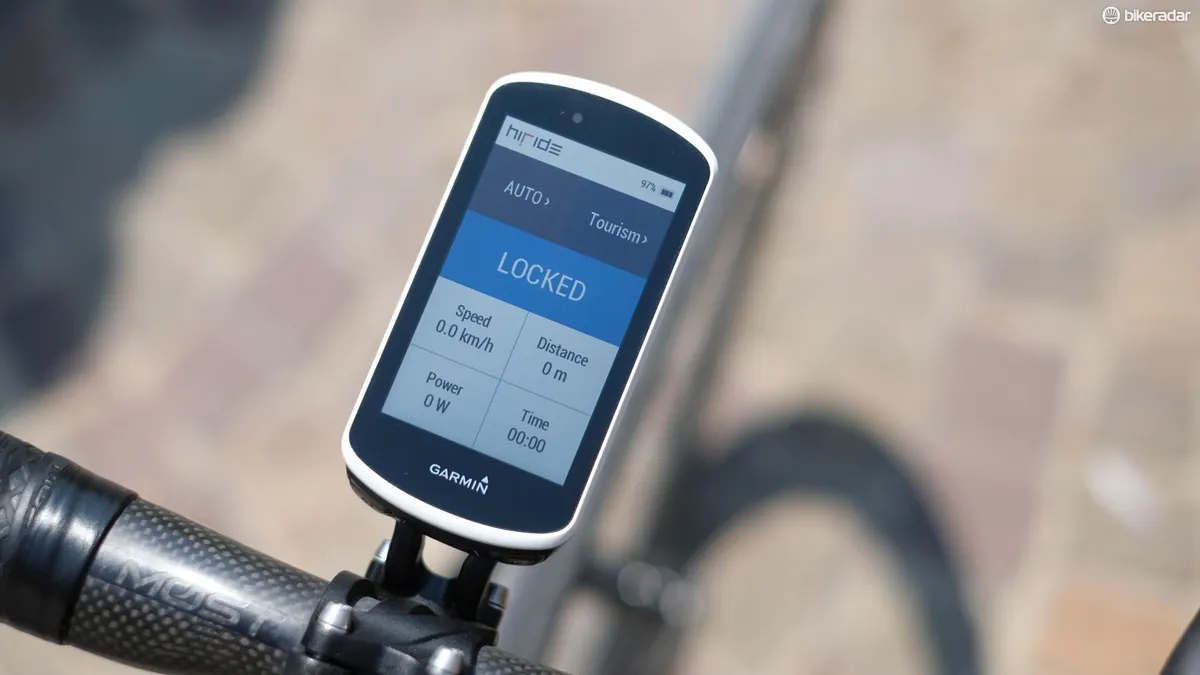
I briefly switched the bike into its locked mode to try and get a true feel for what the suspension was doing and was shocked at how much slower and harsher progress became.
It got to the point where I was once again nearing the point of falling with this alarmingly expensive Pinarello. Flicking the ESAS back to open and I could once again accelerate without drama. I noticed no pedal-induced bobbing or energy being sapped from my legs, just a rear tyre that seemed to conform to the constantly changing ground.
Testing ESAS has almost left me with more questions than answers. The system as it is sure works well, but I feel like it would be transformed if it was used in combination with a similar fork.
HiRide is actually working on just that, a coil sprung headshock-style suspension system that totals 820g should be due very soon, though it’s unclear if this will debut on a Pinarello.
What’s perhaps more interesting is the way that suspension could change the way we look at road bike tyres.
Think about how in most cases it only takes a difference of about 10–15psi for a bike to go from feeling comfortable to brutally stiff. This is because we rely heavily on our tyres to provide suspension. If we have dedicated components to do the job of providing suspension then could we better optimise our tyres for grip and rolling resistance?
I’ve said it before and I’ll say it again, I think dedicated suspension should come to road bikes and I’m pleased to see companies such as HiRide leading this change. HiRide is currently working hard to turn around the fork I mentioned earlier, which should see us out testing our first full-suspension road bike very soon.
